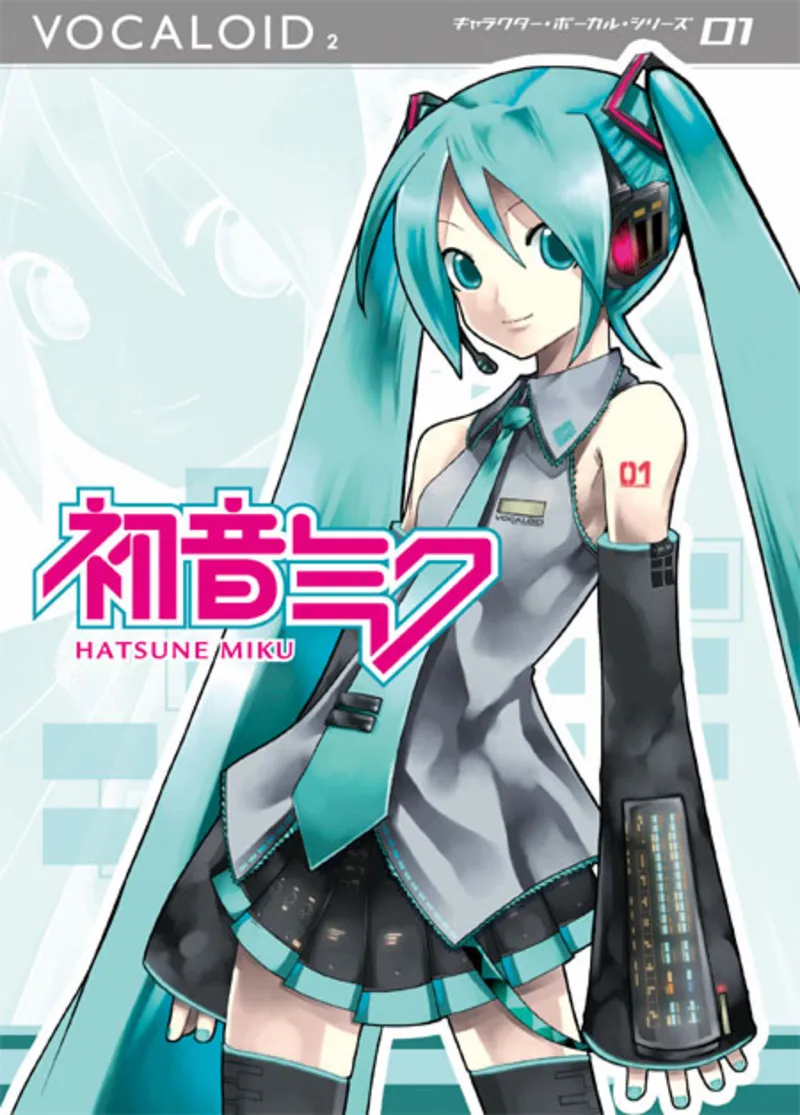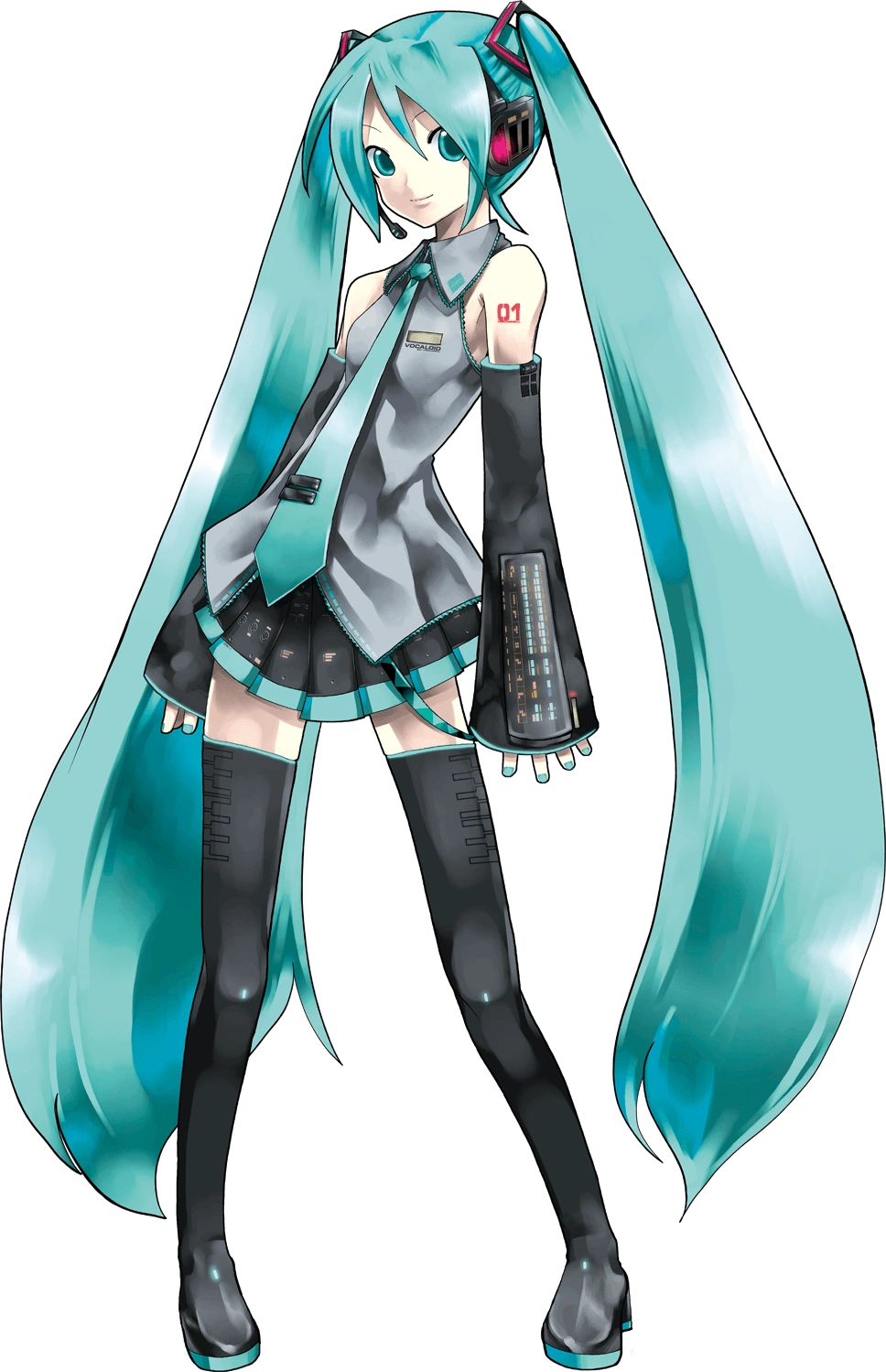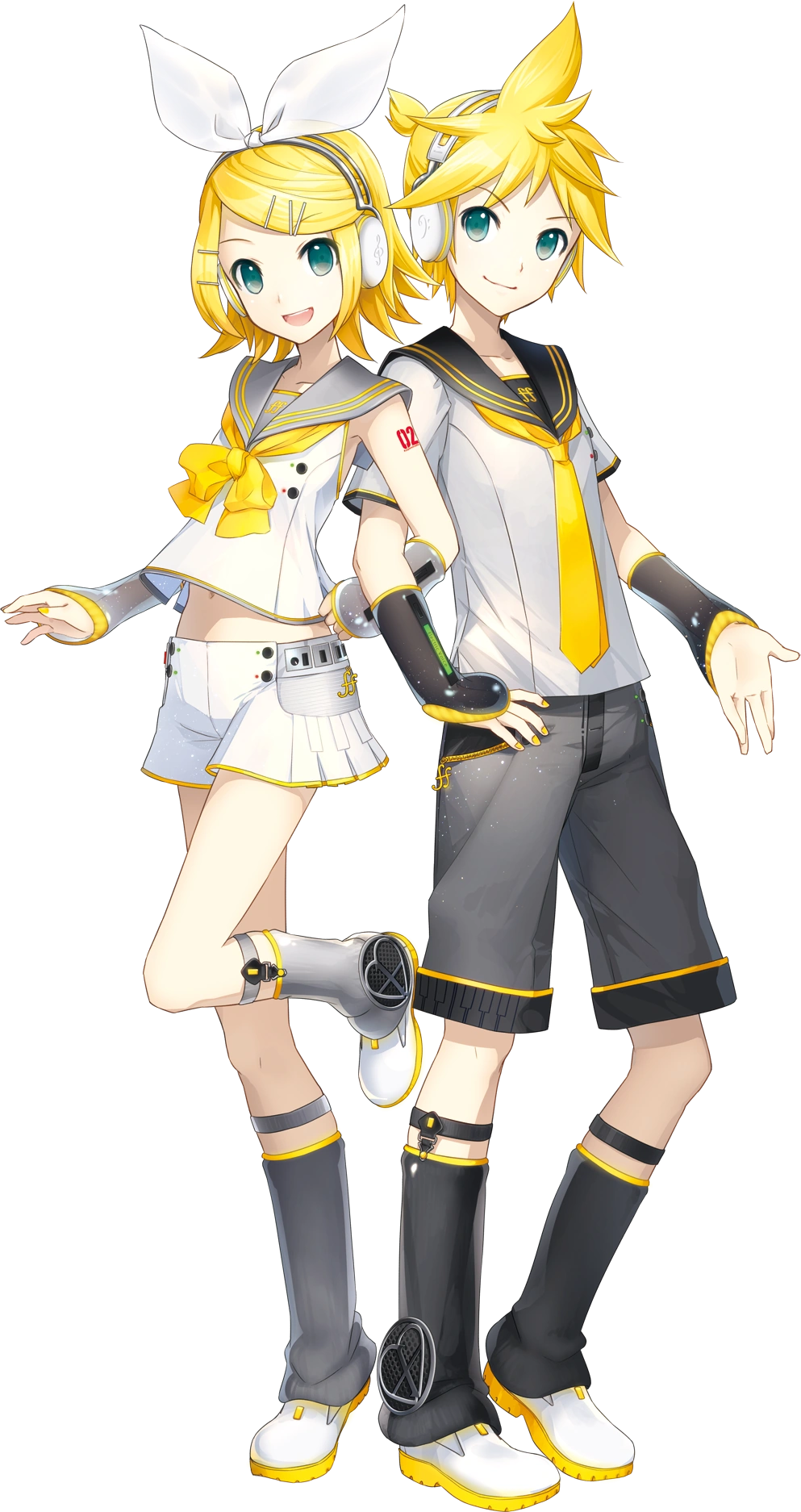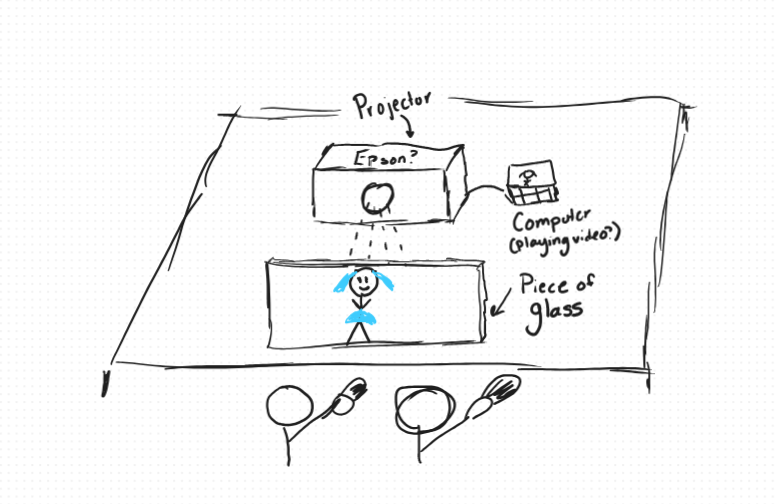Part 2: Post-Miku (August 31st 2007 - Present)
August 31st, 2007 - March 9th, 2010: The Beginning of Hatsune Miku's Reign:
August 31st, 2007 would be a day all vocal synthesis fans and VOCALOID fans would come to remember, since on this day, the first version of Hatsune Miku's voice pack (the voice actor was Saki Fujita) was released by Crypton Future Media (I told you their name would be important). As soon as she was released, VOCALOID became a very popular piece of software, and it wasn't relegated to a niece product used by hobbyists or music producers. Music could now be made by anyone with some lyrics and some time on their hands to learn the software.

Hatsune Miku V2 Box Art (2007)

Hatsune Miku V2 Character Art (2007)
Her blowup can be attributed to many factors, but the one that was the most impactful was her widespread reach through websites like YouTube and NicoNico Douga (basically Japan's version of YouTube, but not owned by Google), since they were starting to launch around the time Miku first launched on the market. These websites were breeding grounds for many different songs to start to appear. Here are some examples:
World is Mine by ryo (Supercell)
Triple Baka by LamazeP
Tell Your World by kz-livetune
Nyanyanyanyanyanyanya! by daniwellP
Fun Fact: "Nyanyanyanyanyanyanya!" by daniwellP would serve as the basis for the "Nyan Cat" meme! Yeah, it was Miku before Momo (who voiced in the Nyan Cat meme).
Fun Fact (also): Tell Your World was actually commissioned by Google Chrome Japan for an ad they ran around 2011. We will get more into that though in the impact section.
Miku's success made Crypton respond by creating multiple other characters, such as the Kagamine Twins (Rin and Len), along with Megarine Luka, which would cap the Cryptonloids. All 6 are very popular even today (with Miku being the most popular of them all) and their music is still being made today as well. But, back in 2010, all of them became real when they started appearing in... concerts. Yeah, let's talk about holograms, illusions, and maybe even the Miku Expo 2024 drama.

Kagamine Rin and Len V4X Design (2015)

Megarine Luka V4X Design (2015)
March 9th, 2010 - Present: The Beginning of Hatsune Miku's *REAL* Reign:
On March 9th, 2010, Miku would appear in her first live concert where she was not a guest appearance. Now, you might be asking yourself: HOW IS THAT EVEN DONE?! SHE'S NOT EVEN REAL! Well, it's actually really simple:

My terrible drawing...
To start with, the tech was developed by R3 Systems, a division of Crypton Future Media. This hologram tech made up how it was done up until Miku Expo 2024 (with VERY few exeptions). You had a projector in the back (the only brand I could think of is Epson, but I bet it's a different brand...) that would shine a video from a computer of some sort onto a piece of glass (or three pieces put together) to create a 3D hologram illusion aka the Pepper's Ghost effect. It worked, since these concerts (that were exclusive to Japan, at the time) sold out very quickly. Obviously, this was a major success! She would eventually end up in the US, starting with Mikunopolis at Anime Expo 2011 in Los Angeles. This was also a major success, and Miku Expo was born in 2014, and it has continuted on till the present day! But, things have changed...
This year's Miku Expo in North America has seen the change from the old projection/pepper's ghost effect tech to an LCD screen. While there are some benefits to using an LCD, this change wasn't communicated to people buying tickets. This outraged fans (including myself, even though I wasn't going to go to a concert), and a petition was started to beg Crypton to change it back to the original tech. They didn't, and they also confirmed that the LCD screen would also be used in the European tour later in 2024. There were also other problems with this year's Miku Expo, including crowd control, lack of glowsticks, and much more. We will see how Magical Mirai in Japan goes later this year, and the future of Miku concerts around the world *might* hinge on it. We'll see.